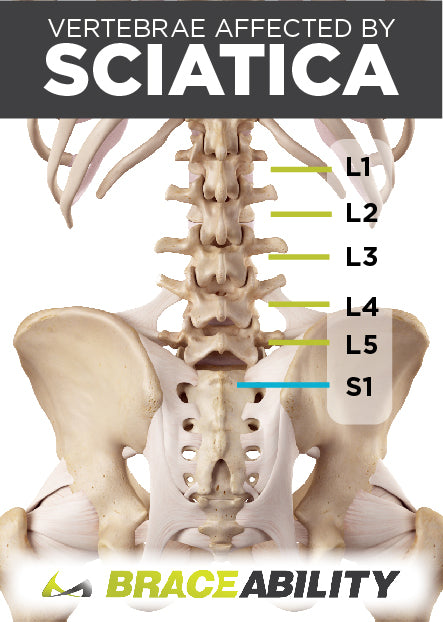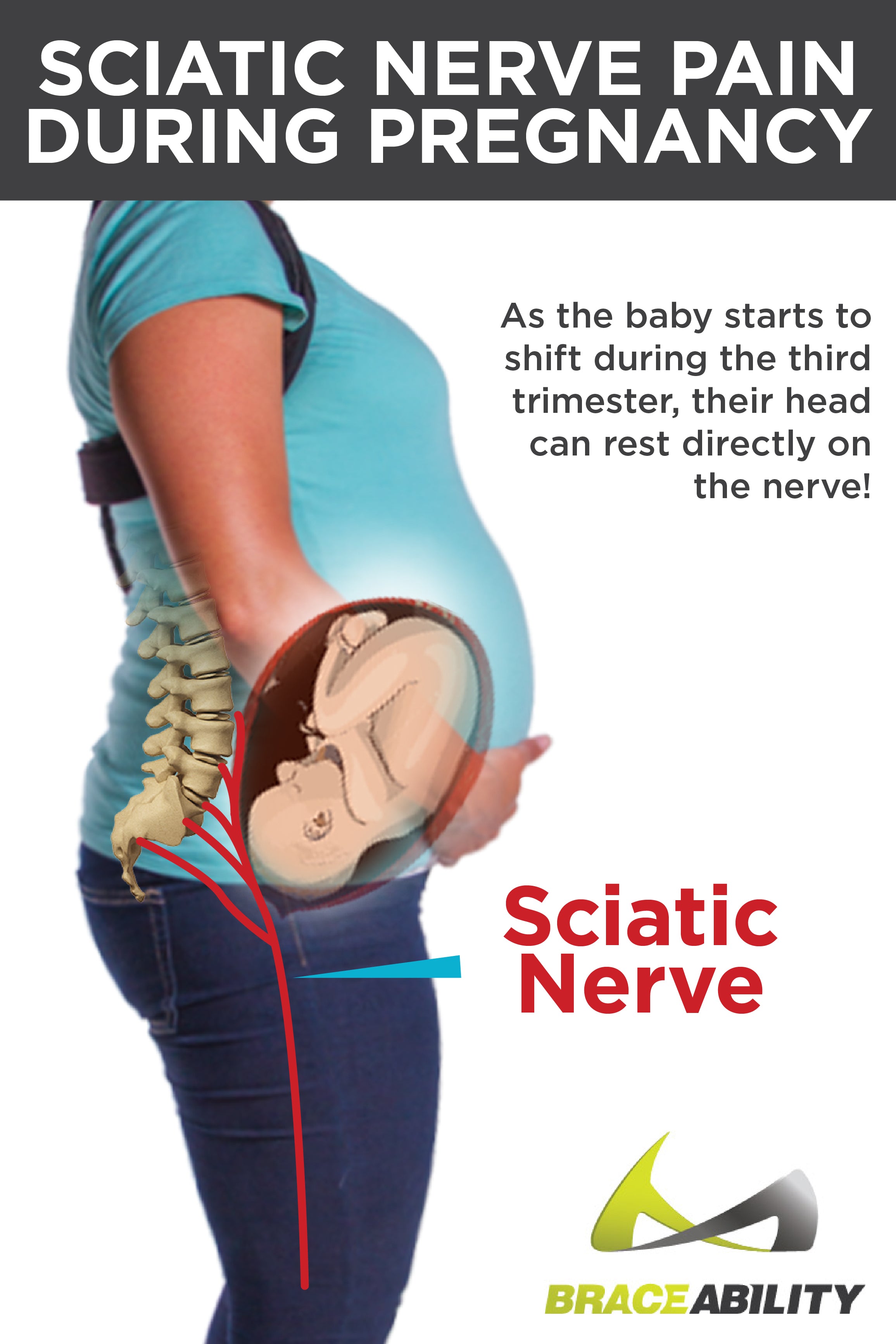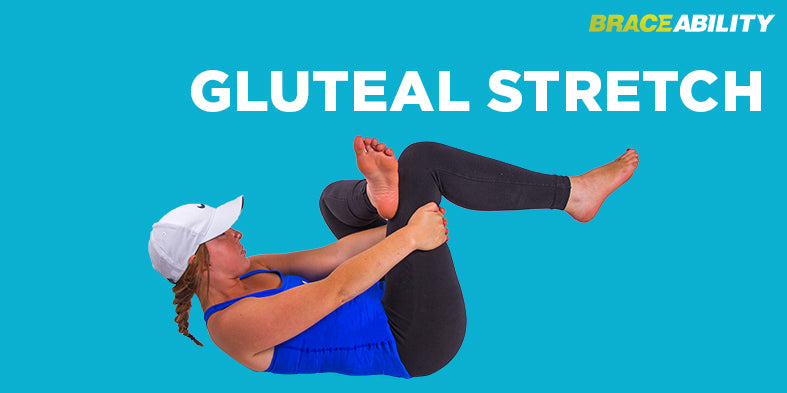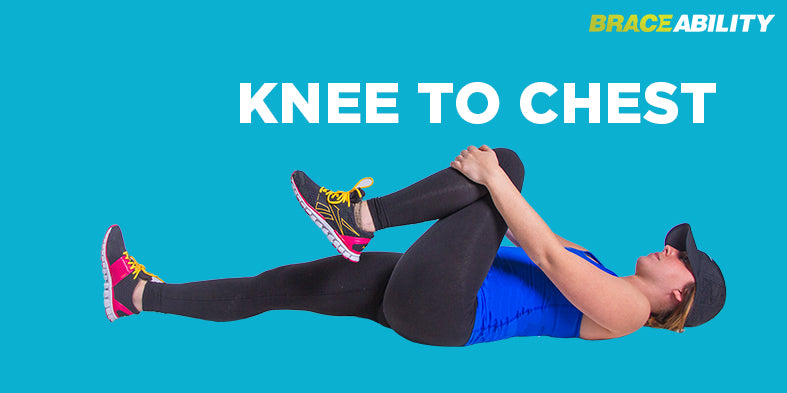Sciatica & Pinched Nerve Pain
What is a Pinched Nerve in My Lower Back?
Sciatica can be a confusing term as it’s not a condition by itself, but rather a symptom of another underlying injury that’s causing nerve compression - more specifically constricting your sciatic nerve. The sciatic nerve travels from your lumbar spine, through your pelvis or buttock region, and then down each of your legs to your feet. This nerve plays an important part in your daily functions, giving your legs feelings and sensations. Fun fact: it’s actually the longest and widest nerve in the body.

What’s the Difference Between a Pinched/Compressed Nerve and Sciatica?
What’s the difference between the two? Great question! Although it may seem confusing, it’s actually quite simple - the term ‘sciatica’ is a form of a pinched nerve that’s directly applying compression on the sciatic nerve. Whereas a pinch in your nerve or compressed nerve can occur in many different areas of your body.
You have nerves all throughout your body, from your head all the way down to your toes sending signals down your body. When these nerves are compressed or damaged (when they get pressed between your ligaments, tissues, and bone) your body can experience pain or discomfort in corresponding areas. For example, if you have a compressed nerve in your arm this can, in turn, lead to painful symptoms in your elbow, hand, wrist, and fingers. Just as sciatica is compression in the lower back region, leading to pain in the legs and feet.
Conditions That May Be Causing the Pinched Nerve in Your Back
This nerve compression can be a result of many other conditions involving the discs in your back. Your vertebrae consist of 23 spinal discs: 6 located in your neck or cervical region, 12 in your thoracic or middle back region, and 5 in the lumbar or lower back region. Since the sciatic nerve is located in your lumbar spine, injury or trauma to those 5 discs can cause a large amount of pain or discomfort. Additionally, over time these discs tend to be prone to normal wear and tear throughout our lifetime, that’s why the most common ages that experience sciatica is between 30-50 years. This wear and tear typically lead to your discs to become inflamed, irritated, or weak - and more specifically, leading to constriction of your sciatic nerve.
These spinal disc conditions include:

- Lumbar Herniated Disk
- Degenerative Disc Disease
- Spondylolisthesis
- Spinal Stenosis
- Si Joint Dysfunction
- Bulging Disc
- Trauma such as a compression fracture in your spine
- Arthritis
- Diabetes (rare cases)
Most Common Pinched Nerve in Back Symptoms
The term ‘sciatica’ refers to the pain that you feel, commonly in your legs, because of this compression in your spine. Do you think you may be suffering from sciatica pain? Some of the other symptoms besides leg discomfort include:
- Constant chronic pain running down the back of one side of the buttocks or calf
- Pain worsening when sitting
- Pain becoming severe when you cough or sneeze
- Tingling, numbness, or a burning sensation in your legs
- Sharp pain making it difficult to stand up or walk
Another interesting factor in diagnosing sciatica nerve pain is that your symptoms can be directly linked to which nerve is infected. Although sciatica can result in a combination of symptoms, you may be able to determine which specific lumbar vertebrae is effected.
If you’re experiencing pain in your thighs:
It’s likely your pain is rooting from the L4 nerve area.
If you’re experiencing pain in your ankle or big toe:
It’s likely your pain is rooting from the L5 nerve area.
If you’re experiencing pain in your little toes or outside the region of your foot:
It’s likely your pain is rooting from the S1 nerve area.
Is Sciatica During Pregnancy Common?
Besides the spinal conditions listed above, it can be common for pregnant women to experience sciatic nerve pain as well. As your baby grows, he or she may press on your sciatic nerve since it lies directly underneath your uterus. In addition, the normal weight gain you experience during pregnancy can put pressure on the sciatic nerve.

Experiencing other lumbar pain due to pregnancy? You’re not alone! Many women will experience some sort of back pain problems throughout their trimesters. The extra weight can cause a large amount of stress on your back that you’re not used too but don’t worry, we have 7 effective remedies for pregnancy back pain to help!
It’s also a great idea for women to use a lower back corset or belt to help alleviate some of this back discomfort and ease your pain.
Top 9 Best Ways to Relieve My Sciatica Back Pain
Sciatica can be frustrating and debilitating, especially if you’ve been experiencing this pain for a while. Luckily for you, we have many easy and great treatment remedies to ease your pain.
-
Heat/Ice Therapy is Great for Pinched Nerve in Upper Back
Applying a combination of heat and ice to an injury has been proven to help not only reduce discomfort but also speed up recovery. For sciatica pain, applying a heating pad can help relax the muscles in your back while simultaneously promoting blood flow. On the other hand, applying an ice pack can help prevent muscle spasms and diminish swelling. A good way to alternate heat and cold is by wearing our muscle pain wrap that features a pocket specifically for hot/cold packs. It even comes with one pack, making it even easier to get instant relief at home.
-
Anti-Inflammatory Pain Reliever Medication for Lower Back Pinched Nerve
Many doctors will recommend taking anti-inflammatory medicine to help prevent swelling and inflammation. Such medications can also temporarily relieve some of your initial symptoms, especially if you know you’re going to be sitting for a long period of time.
-
Steroid Injections - for Severe Sciatic Back Pain
Some individuals experiencing a large amount of pain may have to resort to receiving steroid injections from their physician. These injections are applied directly to the specific nerve root that is infected. Although these injections provide immediate relief, you will more than likely have to get them multiple times as they are only temporary.
-
Working with a Physical Therapist or Chiropractor
Working hands-on with such professionals can be a great way to deal with your pain head-on. Physical therapists and chiropractors work with you to create a great plan to help heal from your sciatic pain. Additionally, chiropractors can help align your spine to reduce some of that compression placed on the nerve.
-
Massage for a Pinched Nerve in Back
This as great excuse to treat yourself! Getting a back massage from a trained professional can help increase your blood flow, relax your muscles, and work to release endorphins throughout your body.
-
Wearing a Lumbar Back Support for Sciatica
Wearing lumbar back braces for sciatica can be an easy and useful way to support your back and spine. Wearing such supports place direct pressure and compression on the sciatic nerve region - lowering your painful symptoms. For those who have occupations that require sitting for a long period of time, wearing a brace for sciatica may be essential. Sciatica supports also can prevent your spine from going out which would make your condition or injury worse.
-
Correcting Your Posture Stance
Correcting your posture can give you many benefits such as giving you higher energy levels all the way to boosting your confidence. Besides those benefits, having great posture has also been shown to reduce muscle spasms and lower chronic neck and back pain, which can be a sign of sciatica pain. Wearing a posture brace is a great tool to help train your muscles to stand upright and cure your bad posture. -
Exercises/Stretches for Lumbosacral Back Pain and Sciatica
Exercises that focus on the movement of your hips, lower back, and abdomen are ideal for those suffering from sciatic nerve compression. Many exercises for sciatica include yoga or Pilates as these incorporate stretching and strengthening of your muscles. Here are a few of the exercises we suggest you try:
-
Gluteal Stretch: While lying down on your back, bend your right knee and place both hands under your thigh. Using your hands, pull the left knee across your body towards your left shoulder. Hold for 10 seconds then repeat with left leg.

-
Knee to Chest: While lying down with your legs extended in front of you, bend your right knee and pull it towards your chest. Hold for 20 seconds, then repeat on another leg.

-
Half Spinal Twist: While sitting with your legs out in front of you, grab your right leg and place it across your left leg with your right foot flat on the floor. Take your left arm and place it over your right knee until you feel a stretch. Hold this for 20 seconds then repeat with the left leg.

-
Cobra Pose: Lie on your stomach on the ground with your legs straight out behind you. Place your elbows at a 90 degree and right next to your shoulder. When inhaling, straighten your arms and lift your chest off of the ground. Hold this pose for 20 seconds then release down to the floor. Repeat as many times as you feel necessary.

-
Gluteal Stretch: While lying down on your back, bend your right knee and place both hands under your thigh. Using your hands, pull the left knee across your body towards your left shoulder. Hold for 10 seconds then repeat with left leg.
-
Pinched Lumbar Nerve Surgery
Unfortunately, if the above remedies haven’t work or your condition has become worse, it’s likely your doctor will suggest sciatica surgery to relieve your nerve compression. Typically, there are two common procedures that are used to get rid of sciatica: microdiscectomy and laminectomy.














